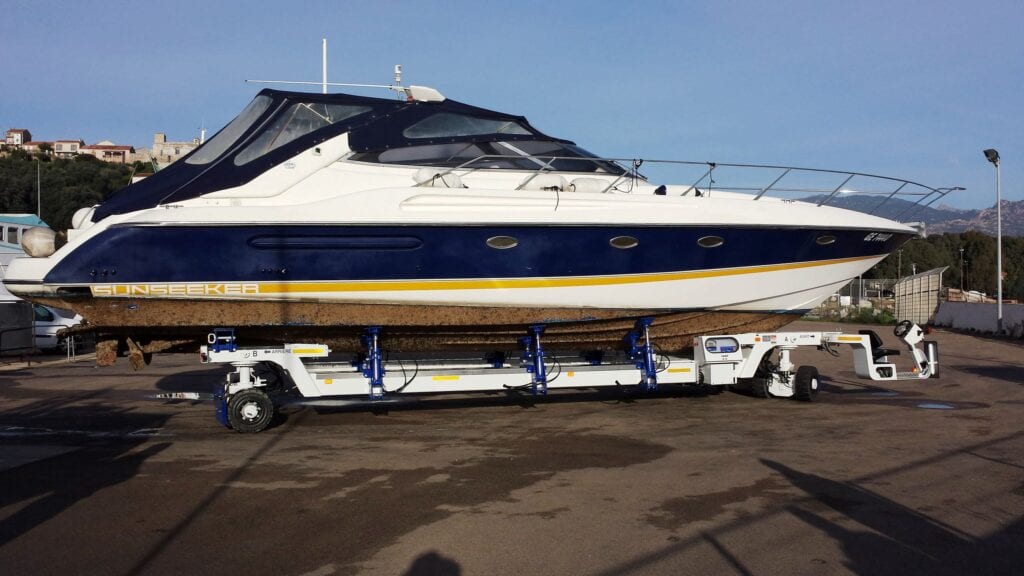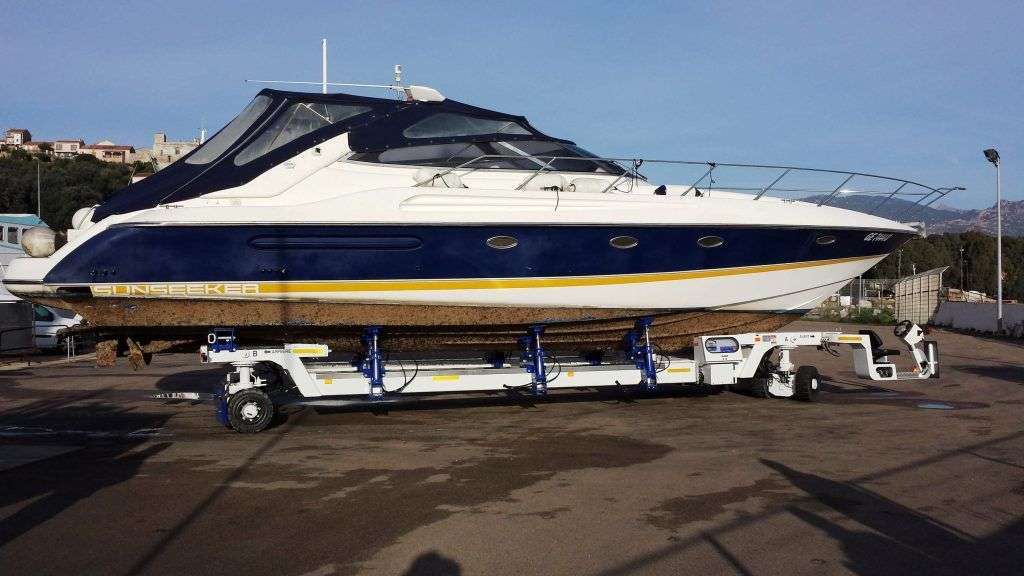Are you getting ready to transport your beloved boat to a new location? Well, you’ve come to the right place! In this article, we’ll dive into the essential steps you need to take to prepare your boat for transport. Whether you’re moving to a new marina or taking your boat on a grand adventure, these tips will ensure a smooth sailing journey.
First things first, before you even think about hitting the road or water, it’s crucial to properly prepare your boat. From securing loose items to protecting delicate features, taking the time to get everything in order will save you from potential headaches down the line. So, grab your captain’s hat and let’s dive into the nitty-gritty details of boat preparation for transport.
1. Clean your boat thoroughly, removing any dirt, debris, or marine growth. This will help protect your boat during transit and prevent the spread of invasive species.
2. Secure loose items, such as cushions, electronics, and fishing gear. Remove any valuables from the boat to prevent damage or loss.
3. Check the boat’s fuel level and drain the tanks to prevent leaks during transport. Disconnect the batteries and secure all hatches and doors.
4. If your boat has a trailer, inspect it for any damage or maintenance issues. Ensure the tires are properly inflated and the brakes are working correctly.
5. Finally, consider hiring a professional boat transport company to handle the logistics and ensure your boat arrives safely at its destination.
By following these steps, you can ensure a smooth and secure transport for your boat.

Preparing Your Boat for Transport: A Comprehensive Guide
Transporting your boat safely and securely requires careful preparation and attention to detail. Whether you’re moving to a new location or sending your boat for repairs, proper preparation is essential to ensure a smooth and hassle-free transport process. In this guide, we will walk you through the steps you need to take to prepare your boat for transport, ensuring its safety and integrity throughout the journey.
1. Choose a Reliable Boat Transport Company
Before you begin preparing your boat for transport, it’s crucial to select a reputable and reliable boat transport company. Look for a company that specializes in boat transport and has a proven track record of successful deliveries. eShip Transport Company is an industry leader in boat transport services, offering fast and reliable transportation across the United States. Their professional and insured transport services guarantee the safe delivery of your boat.
When selecting a boat transport company, consider factors such as their reputation, customer reviews, and insurance policies. It’s essential to choose a company that provides comprehensive coverage for any potential damages that may occur during transit. eShip Transport offers a Platinum Protection Plan that covers any damage to your boat during transport, giving you peace of mind throughout the journey.
Get FREE Boat Transport Quote
(Complete the form below for free reliable boat transport service quote)
2. Clean and Inspect Your Boat
Prior to transport, thoroughly clean your boat, both inside and out. Remove any personal belongings, loose items, and unnecessary accessories. This will not only make the transport process easier but also help protect your boat from damage during transit. Inspect your boat for any existing damages and document them with photographs or videos. This will serve as evidence in case of any disputes or claims.
Pay special attention to the boat’s hull, propellers, and any other vulnerable areas. If you notice any damages or issues, make necessary repairs or inform the transport company beforehand. Properly securing loose items, such as electronics or detachable parts, will prevent them from getting damaged or lost during transit.
3. Remove Fuel and Drain Water Systems
Most boat transport companies require you to remove fuel from your boat before transport. This is essential for safety reasons and to comply with transportation regulations. Drain your boat’s fuel tank and ensure it is empty before the transport company arrives. If you’re unsure how to safely drain the fuel, consult your boat’s manufacturer or a professional mechanic.
In addition to fuel, drain all water systems, including freshwater tanks, toilets, and bilges. This will prevent any leaks or water damage during transport. Ensure that all water systems are completely empty and dry before the transport process begins.
4. Secure and Protect Fragile Items
If your boat has any fragile or delicate items, such as electronics or artwork, it’s crucial to secure and protect them properly. Remove any valuable or fragile items from the boat and store them in a safe place. If the items cannot be removed, secure them firmly in place using appropriate padding or cushioning materials.
Utilize bubble wrap, foam padding, or blankets to protect delicate surfaces and prevent scratches or damage during transport. Secure loose items such as chairs, tables, or fishing gear to prevent them from moving around during transit. Taking these precautions will ensure the safety of your boat and its contents throughout the transport process.
5. Check and Secure Boat Covers
If your boat is equipped with a cover or canopy, ensure it is in good condition before transport. Inspect the cover for any tears, loose fittings, or signs of wear and tear. Repair or replace the cover if necessary to prevent any water or debris from entering the boat during transit.
Secure the cover tightly to prevent it from coming loose or blowing off during transport. Use appropriate fasteners or straps to ensure a snug fit. This will protect your boat from external elements and keep it clean throughout the journey.
6. Remove or Secure Accessories
Remove or secure any removable accessories from your boat before transport. Items such as antennas, fishing rods, or wakeboard towers should be properly secured or removed to avoid damage during transit. Follow the manufacturer’s instructions for removing or securing these accessories safely.
If any accessories cannot be removed, ensure they are securely fastened or folded down to minimize the risk of damage. Secure loose cables, ropes, or hoses to prevent them from getting tangled or causing any hazards during transport.
7. Deflate and Secure Inflatable Boats
If you have an inflatable boat, it’s important to deflate it before transport. Deflating the boat will reduce its size and prevent damage from excessive air pressure during transit. Follow the manufacturer’s instructions for deflating and folding the boat properly.
Securely pack the deflated boat in a protective cover or bag to prevent any punctures or tears. Ensure that all valves are tightly closed and that the boat is securely fastened to prevent it from shifting or moving during transport.
8. Secure Boat on Trailer or Cradle
If your boat is transported on a trailer or cradle, ensure it is securely fastened and immobilized before transport. Follow the manufacturer’s instructions for properly securing your boat on the trailer or cradle. Use appropriate straps, chains, or tie-downs to prevent any movement or shifting during transit.
Inspect the trailer or cradle for any damages or wear and tear. Repair or replace any faulty components to ensure the safe transport of your boat. Properly inflated tires and functioning brakes are essential for a smooth and secure transport process.
9. Check and Secure Battery
Before transport, check the condition of your boat’s battery. Ensure that it is fully charged and functioning properly. Secure the battery in place to prevent any movement or damage during transit.
It’s recommended to disconnect the battery’s negative terminal to avoid any accidental power drainage. This will also prevent any potential hazards associated with electrical systems during transport.
10. Secure Boat Documentation and Keys
Keep all necessary boat documentation, including registration papers and insurance documents, in a safe and easily accessible place. Provide copies of these documents to the transport company as required. It’s also important to keep a spare set of keys for your boat in case they are needed during transit.
Ensure that all required permits or licenses for boat transport are in order and readily available. Compliance with legal and regulatory requirements is essential to avoid any delays or complications during the transport process.
Benefits of Choosing eShip Transport for Boat Transport
When it comes to transporting your boat, choosing eShip Transport Company offers numerous benefits:
- Reliable and reputable: eShip Transport is a highly rated and trusted boat transport company with a proven track record of successful deliveries.
- Comprehensive coverage: Their Platinum Protection Plan provides coverage for any damage that may occur during transport, ensuring the safety of your boat.
- Fast and efficient: eShip Transport offers expedited shipping options to ensure your boat arrives at its destination promptly.
- Professional and insured: With a dedicated customer service team and professional drivers, eShip Transport provides a high level of service and peace of mind.
- Wide range of transportation options: Whether you require enclosed transport or open-air shipping, eShip Transport offers various transportation options to suit your needs.
For reliable and hassle-free boat transport, choose eShip Transport Company. Discover their boat transport services here and experience their commitment to quality and customer satisfaction.
Key Takeaways: What should I do to prepare my boat for transport?
- Inspect the boat for any damages or issues.
- Remove all personal belongings from the boat.
- Secure loose items and cover the boat properly.
- Drain all water from the boat’s systems.
- Notify the transport company about any special requirements or instructions.
Frequently Asked Questions
Preparing your boat for transport is an important step to ensure its safety during transit. Here are some commonly asked questions about preparing your boat for transport:
1. How should I clean my boat before transport?
Before transporting your boat, it’s essential to clean it thoroughly. Start by removing any personal items, loose gear, and detachable parts. Next, wash the boat using a mild detergent and water to remove dirt, grime, and salt deposits. Pay extra attention to the hull, deck, and any other exposed surfaces. Rinse the boat thoroughly and allow it to dry completely before transport.
Additionally, make sure to empty all water tanks and drain the fuel tank to reduce weight and prevent any leaks or spills during transport. Remove any antennas, flags, or other protruding parts that may be damaged in transit.
2. Do I need to secure anything inside the boat?
Yes, it’s crucial to secure any loose items inside the boat to prevent damage during transport. Start by removing any perishable items and securing all cabinets, drawers, and doors. Secure loose equipment, such as fishing rods, tackle boxes, and water sports gear, by storing them in designated compartments or using straps and bungee cords to hold them in place.
If your boat has a cabin, make sure all windows, hatches, and doors are securely closed and locked. This will prevent them from opening during transport and protect the interior from potential damage.
3. How should I protect my boat’s exterior during transport?
To protect your boat’s exterior during transport, consider investing in a quality boat cover. A cover will help shield the boat from road debris, dust, and UV rays. Make sure the cover is securely fastened and properly fitted to prevent it from coming loose during transit.
For added protection, you can also use padding or foam wraps to cover any delicate or vulnerable areas, such as the bow, stern, and sides. This will help absorb any impact and minimize the risk of scratches or dents.
4. Should I disconnect the boat’s battery?
Yes, it’s generally recommended to disconnect the boat’s battery before transport. This will prevent any electrical issues or accidents that may arise during transit. Disconnecting the battery also helps conserve its charge and prolong its lifespan.
Remember to secure the battery and any loose cables to prevent them from moving around or causing damage. It’s also a good idea to label the cables for easy reconnection once your boat reaches its destination.
5. Are there any legal requirements I should consider before transporting my boat?
Yes, there may be legal requirements that vary depending on your location and the size of your boat. It’s important to check with local authorities or transport regulations to ensure compliance. Some common legal requirements may include obtaining permits, adhering to weight restrictions, and following specific guidelines for oversized or wide-load transportation.
Engaging the services of a professional boat transport company can also help ensure that all legal requirements are met and that your boat is transported safely and legally.
Final Summary
So, you’re getting ready to transport your boat, huh? Well, there are a few things you need to do to make sure your vessel is prepared for the journey ahead. First off, you’ll want to give your boat a good cleaning. Get rid of any dirt, grime, or marine growth that may have accumulated. Not only will this make your boat look nice and shiny, but it will also prevent any potential damage during transport.
Next, it’s important to secure any loose items on your boat. Take a walk around and make sure everything is properly stowed away. You don’t want anything flying off or getting damaged while in transit. And don’t forget to remove any valuables or personal belongings from the boat. It’s always better to be safe than sorry!
Now, let’s talk about the logistics. You’ll want to measure your boat and provide accurate dimensions to the transport company. This will ensure that they have the right equipment and can properly accommodate your boat. Additionally, make sure to drain all the fuel and water tanks and disconnect the battery. This will not only reduce the weight of your boat but also eliminate any potential hazards.
Lastly, don’t forget to secure the boat on the trailer or cradle. Use high-quality straps and tie-downs to keep your boat in place during transport. Double-check everything before hitting the road to give yourself peace of mind. Now you’re all set to transport your boat safely and securely to its new destination!
Remember, preparing your boat for transport is crucial to ensure a smooth and worry-free journey. By following these steps and taking the necessary precautions, you’ll be well on your way to getting your boat safely from point A to point B. Happy travels!









